Play Along
The tobacco industry uses it power to burden our society in many ways. Click on the cards to learn more.
Environment
Greenhouse Gases
The combination of greenhouse gases emitted from burning cigarettes is equivalent to about 1.5 million vehicles driven annually.
World Health Organization’s report
Deforestation
Tobacco farming uses a surprisingly large amount of wood, rendering tobacco production a driver of deforestation, one of the leading causes of climate change.
World Health Organization’s report
Products
Candy flavors in e-cigarettes
Youth cite flavors as a major reason for their current use of non-cigarette nicotine products, with 81.5 percent of youth e-cigarette users and 73.8 percent of youth cigar users saying they used the product “because they come in flavors I like.”
Campaign for Tobacco-Free Kids
Juul and the Tobacco Industry
Tobacco giant Altria (maker of Marlboro) invested $12.8 billion in Juul, taking a
35 percent stake in the e-cigarette maker that valued it at $38 billion as they begin to embark on a profit path that relies less on traditional cigarettes.
CNBC
Targeting
Tobacco targets youth through social media
The four largest tobacco companies are using social media in more than 40 countries to promote tobacco use without disclosing that they financed the content, according to an investigation led by the Campaign for Tobacco-Free Kids. The investigation reveals tobacco companies are secretly using social media to promote smoking.
Campaign for Tobacco-Free Kids
Tobacco product placement targets young people
Research has found that stores where youth are more likely to shop contain up to twice as much shelf space dedicated to the three cigarette brands most popular among youth. Tobacco placement near the register encourages impulse purchases of tobacco products, cues cravings, and undermines quit attempts.
Counter Tobacco
Tobacco marketing in lower income neighborhoods
Low-income neighborhoods have denser concentrations of tobacco retailers and are more likely to have tobacco retailers near schools than other neighborhoods.
Truth
Health
Manipulation of potency of nicotine
Chemicals have been added to cigarettes and e-liquid to speed up the delivery of nicotine to the bloodstream and ensure that users inhale more deeply.
World Health Organization
Contents of E-liquids
E-juice or e-liquid is a solution heated by a battery to a high enough temperature so that it produces an aerosol that is inhaled. The e-liquid contains chemicals used as preservatives, and heavy metals and toxins known to cause disease.
Electronic Nicotine Delivery Systems Key Facts
Influence
Debt Bondage
In Malawi, a country in Africa, tobacco farm workers come to work and live on the land that they are farming. They must take a loan from the rich, tobacco-owning landowner for food, water, seed, and fertilizer. Then, the tobacco industry who sets the price for the tobacco, sets it low enough where the farm worker cannot pay back his/her debts and is forever in debt to the land owner. This is a system called debt bondage.
International Labor Rights Forum World Health Organization
Forced Labor
Today, tobacco field workers in the US are mostly migrant laborers from Central America who are either undocumented or in America on temporary work visas. Threats of job loss or calls to immigration authorities can be used to keep workers working despite the sub-poverty wages, grueling hours, lack of access to clean water or restroom facilities, poor housing and risk of green tobacco sickness (a.k.a nicotine poisoning), sunstroke and other health risks.
International Labor Rights Forum
Funding political campaigns
The tobacco industry contributes millions of dollars each election cycle to candidates for Congress in an effort to influence federal policies.
Campaign for Tobacco-Free Kids

